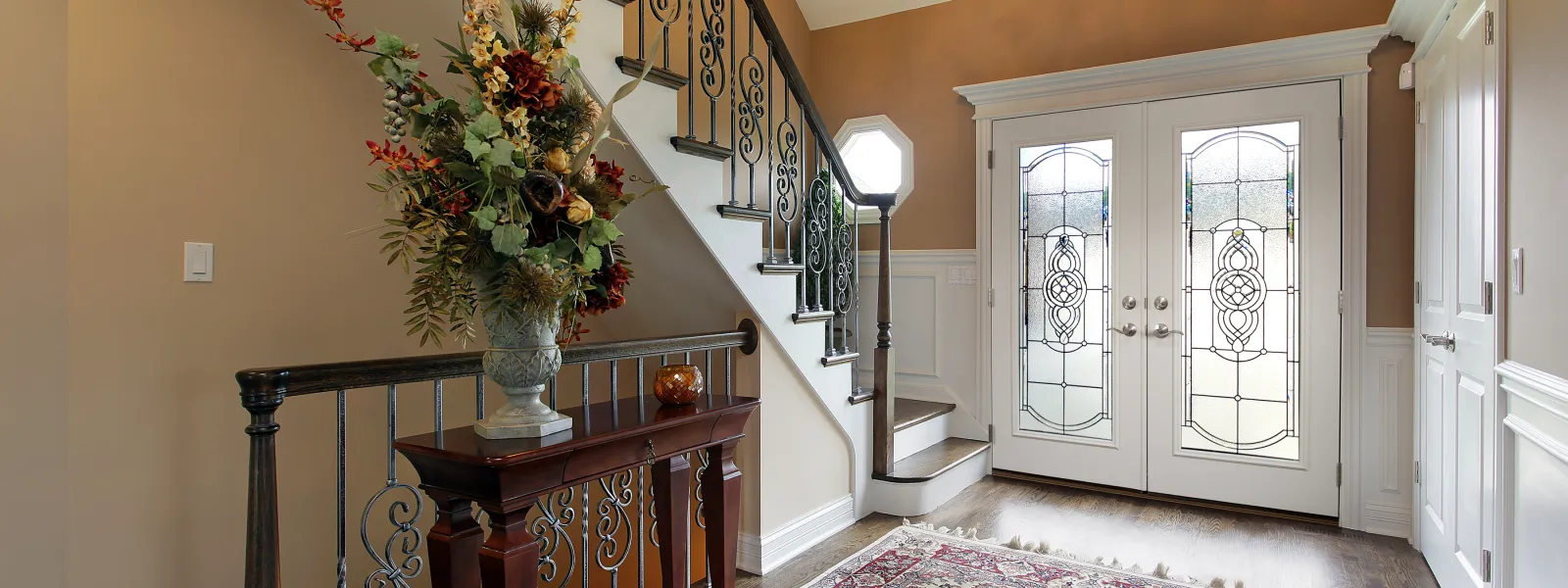How to Choose the Best Front Door for Your Home
Posted on March 08, 2022
Your front door is the literal entrance to your home, but it's more than that. You put a lot of trust into it. It's people's first impression of your home, it can directly impact the curb appeal and resale value, it keeps your family secure, and its durability can keep the elements out, too.
When shopping for a new front door, there are lots of important decisions to make. Your door needs to be more than just a beautiful design feature and choosing the best material for your front door and what type of front door you want will impact your budget, security, and energy savings.
Choosing Front Door Materials
There are three main materials front doors are made of, and each has its own benefits.
1. Wood Front Doors
When most people visualize what they want their door to look like, they're most likely imagining a wood door. For hundreds of years, wood was the only option for material available for front doors. Wood is an incredibly versatile material. You can paint it, trim it, and craft it into any style you'd like, even oversized front doors.
Wood is also heavy material and tends to last really long, so the chances of needing to replace it are low. However, the general maintenance and upkeep of wood are high. One downfall to using wood for your next front door is that it's sensitive to its environment. It can expand in heat, contract when it's cold, and can warp and rot if it's exposed to too much moisture and humidity.
2. Steel Front Doors
Steel was first introduced as a material for doors over a hundred years ago and became popular for front doors not long thereafter. Steel doors are really durable, which makes them an exceptional choice when living in an area with intense heat, humidity, and rainfall. They aren't sensitive to their environment and will never expand or contract either.
One downfall is that they're prone to rust, so they need to be regularly maintained. Steel front doors don't have the range of design options that wood front doors have, but they are more budget-friendly and insulate your home better, meaning your initial investment will be smaller and your long-term investment will be lesser because you'll be saving money on your energy bill. Steel is also ranked highest for security. As such, when comparing steel vs. wood doors, steel is the better choice.
3. Fiberglass Front Doors
Fiberglass is the newest material used for front doors. It was first introduced in the 1980s and is quickly becoming the most popular front door material. Fiberglass front doors won't rust, warp, or rot and they're not sensitive to their environment either, so they require very little maintenance. They're also durable and dent-resistant, lightweight, and a great insulator.
Similarly, to steel front doors, fiberglass front doors cost less and save you more in energy costs, too. While fiberglass doesn't have as many style options as wood, there are still numerous style and color options available which helps with its versatility factor. When comparing fiberglass vs. wood doors and steel doors, fiberglass is the best bet. Its durability, longevity, versatility, low level of maintenance, high level of security, and energy efficiency set it above the rest.
Types of Front Doors
The
type of front door you have says a lot about the personality of your
home and should match your home's overall style. Here's a primer on
which doors fit best with which styles.
Modern. Modern front doors are very minimalist and usually have sleek lines and little to no decorative features. A few modern front door ideas include using dark and bold colors, adding an oversized frosted pane of glass, using sleek hardware, and innovative track and hinge systems.
Rustic. Rustic front doors go well with homes made of wood and brick and typically have raised panels and inlet glass in them. This style of door would often be made of wood or fiberglass and use dark earthy tones, large glass panels, and oversized hardware.
Craftsman. Craftsman doors usually only have glass on the upper third of the door and have flat wood panels and thick pieces of trim. They're typically more simplistic, but might be spiced up with large panes of stained glass or intricate designs.
Choosing your next front door is an important decision. Schedule an appointment today and let us help find the right front door for you.
